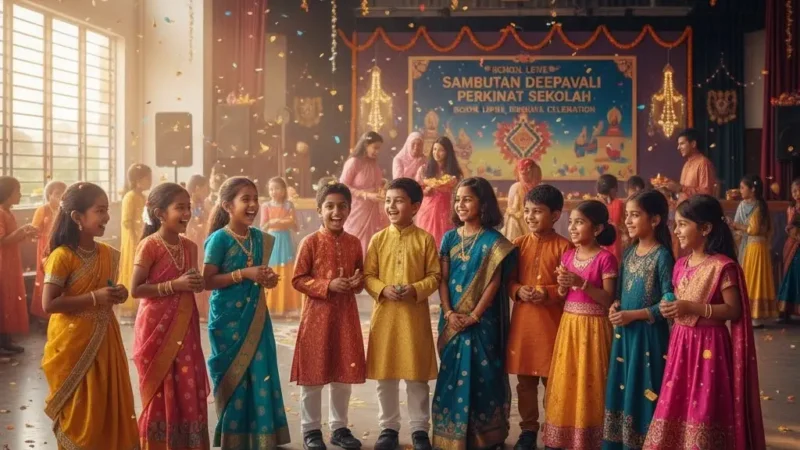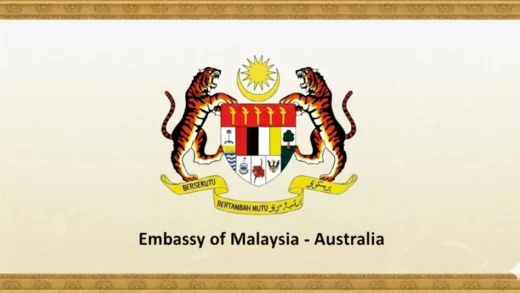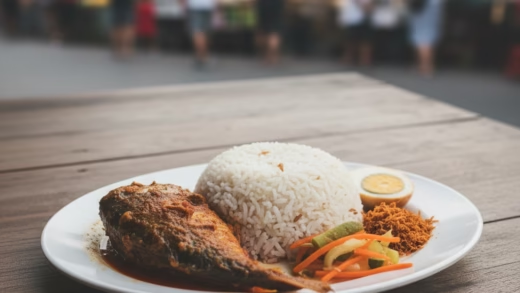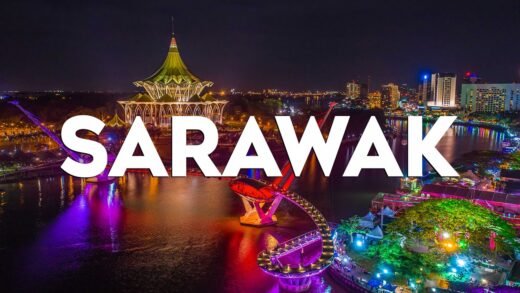How Malaysian Schools Celebrate Deepavali

Introduction: The Festival of Lights in Malaysian Schools
Deepavali, or Diwali, is one of Malaysia’s most celebrated festivals, marking the triumph of light over darkness and good over evil. For Malaysian Indians, it’s a sacred time of renewal, reflection, and family unity. Yet, beyond temples and homes, Deepavali shines brightly in schools across Malaysia, where it becomes an educational and cultural celebration that bridges communities.
Schools across Kuala Lumpur, Penang, Johor, and Ipoh host colourful events, art competitions, and cultural showcases that highlight Deepavali traditions in Malaysia and the spirit of togetherness. From creating kolams to learning about the Malaysian Deepavali history and culture, students experience firsthand how this Indian festival enriches Malaysia’s multicultural identity.
The Origins of Deepavali in Malaysia
Deepavali has deep roots in Malaysia’s Indian community, many of whom trace their heritage to South India. The festival symbolizes the victory of Lord Rama over Ravana, Lord Krishna’s triumph over Narakasura, and the spiritual awakening of light dispelling ignorance.
When Indian migrants arrived in Malaysia during the British colonial period, they brought their customs, food, and religious practices. Over the decades, Deepavali evolved into a nationwide celebration — blending traditional Hindu rituals with Malaysia’s unique multicultural fabric.
Today, Deepavali is a public holiday and an important part of Malaysian Indian festival celebrations, recognized not just by Hindus but by Malaysians of all backgrounds who join in the festivities.
How Malaysian Schools Celebrate Deepavali
1. Classroom Decorations and Kolam Competitions
One of the most iconic Deepavali traditions in Malaysia is the creation of kolam — intricate floor designs made from coloured rice, sand, or flower petals. In schools, students collaborate on kolam designs at entrances or courtyards, symbolising joy, harmony, and the welcoming of prosperity.
These activities are not only creative but also educational, teaching students geometry, teamwork, and the cultural meaning behind the designs.
2. Cultural Assemblies and Performances
Schools often hold Deepavali assemblies, featuring:
- Traditional Indian dances like Bharatanatyam and Kuchipudi
- Tamil and Hindi song performances
- Drama skits based on the story of Lord Rama
- Speeches about the Malaysian Deepavali history and culture
These events promote inter-ethnic understanding while allowing Indian students to take pride in their heritage.
3. Food Fairs and Traditional Sweet Sharing
Food is at the heart of Malaysian Indian festival celebrations. During school events, food fairs feature beloved Deepavali treats such as:
- Murukku – crispy rice-flour spirals
- Ladoo and Mysore Pak – sweet confections made from ghee and gram flour
- Payasam – sweet milk pudding with vermicelli and raisins
- Vadai – savoury lentil fritters
Students and teachers often share these delicacies during cultural days, encouraging others to appreciate Indian vegetarian cuisine and festive sweets.
4. Educational Lessons on Deepavali’s Meaning
Teachers use Deepavali week to educate students on themes like light overcoming darkness, kindness, and family unity. In moral education and history lessons, teachers introduce:
- The story of Rama and Sita
- The symbolism of diyas (lamps)
- Deepavali customs in different Indian states
In doing so, schools reinforce values of compassion, discipline, and cultural respect — the essence of Deepavali.
5. Dress-Up Days and Traditional Attire
Students and teachers often wear traditional Indian clothing during Deepavali celebrations.
- Girls wear sarees, lehengas, or salwar kameez.
- Boys wear kurta pajamas or veshti.
Schools encourage everyone, regardless of background, to participate, creating an inclusive environment that celebrates cultural beauty and diversity.
Regional Deepavali Celebrations in Schools
Penang: A Heritage of Lights
In Penang, Deepavali celebrations in schools often feature visits to heritage temples and cultural performances. The island’s rich Indian heritage means schools frequently partner with cultural centres for traditional dance workshops and storytelling events.
Kuala Lumpur: Learning from Temples
Kuala Lumpur schools benefit from proximity to iconic temples like Batu Caves and Sri Mahamariamman Temple, where students learn about Hindu architecture, rituals, and community service. Schools in KL often arrange temple visits as part of experiential learning, deepening understanding of where to celebrate Deepavali in Malaysia.
Johor: Community and Fusion
Johor schools often celebrate with local Indian associations, showcasing how Deepavali blends with Johor’s multicultural landscape. Events may feature both Indian and Malay performances, highlighting Malaysia’s unity in diversity.
Ipoh: Small-Scale Traditions with Big Meaning
In Ipoh, schools emphasize family and community. Classroom activities often focus on storytelling, charity drives, and hands-on crafts to instill the moral values of Deepavali.
Temples and Cultural Education: Batu Caves & Sri Mahamariamman Temple
Two temples play an important role in Malaysian Deepavali history and culture:
- Batu Caves (Selangor): Known for its majestic statue of Lord Murugan, Batu Caves hosts thousands of devotees during Deepavali. Nearby schools often organize guided visits to observe prayers and decorations.
- Sri Mahamariamman Temple (Kuala Lumpur): Malaysia’s oldest Hindu temple, it’s a cultural and historical landmark that schools use to teach students about Indian artistry, devotion, and architecture.
Such visits help students appreciate not just religious practices, but also the artistry and history embedded in Malaysia’s Indian heritage.
Traditional Customs and Family Practices
At home, Deepavali begins with oil baths, prayers, and temple visits at dawn. Families light diyas, decorate entrances with kolam, and exchange gifts and sweets. Schools often discuss these customs during cultural studies to help non-Indian students understand the spiritual essence of Deepavali.
In addition, many schools organize charity projects and community outreach programs during Deepavali, teaching the importance of compassion — one of the festival’s key values.
Deepavali as a Lesson in Unity and Multiculturalism
Deepavali in Malaysian schools is more than a celebration—it’s a classroom in cultural harmony.
By combining art, music, dance, and history, schools provide students with hands-on experience of Malaysia’s cultural mosaic. The celebration of Deepavali traditions in Malaysia fosters:
- Cultural awareness and tolerance
- National unity among students of all backgrounds
- Respect for diversity, a cornerstone of Malaysian identity
Conclusion
From dazzling kolams to delicious sweets, from educational assemblies to temple learning trips, Malaysian schools celebrate Deepavali with energy, inclusion, and respect. This festival doesn’t just light homes—it illuminates young minds, fostering harmony and cultural pride among Malaysia’s future generations.
Whether you’re in Penang, Kuala Lumpur, Johor, or Ipoh, every classroom shines a little brighter when Deepavali comes around — a living lesson in unity through diversity.





Comments are closed.